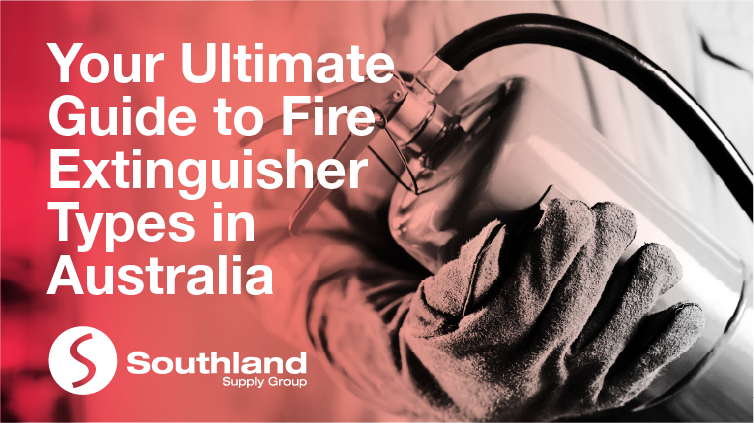
While they may all look the same, there are a number of different fire extinguisher types on the market, and they all have specific uses. The type of fire extinguisher you need depends on the type of fire you need to extinguish. This is very important, as using the wrong extinguisher can have disastrous consequences.
This guide will walk you through the process of determining fire extinguisher types.
The Classes of Fire
There are six classes of fire: Class A, Class B, Class C, Class D, Class E, and Class F.
- Class A fires – combustible materials: caused by flammable solids, such as wood, paper, and fabric
- Class B fires – flammable liquids: such as petrol, turpentine or paint
- Class C fires – flammable gases: like LPG, hydrogen, butane or methane
- Class D fires – combustible metals: chemicals such as magnesium, aluminium or potassium
- Class E fires – electrical equipment: once the electrical item is removed, the fire changes class
- Class F fires – cooking oils: typically, a chip-pan fire
Fire Extinguisher Types in Australia
There are 5 main fire extinguisher types in Australia – Water, ABE, CO2, Foam & Wet Chemical.
The different fire extinguisher types put out fires started with different types of fuel – these are called ‘classes’ of fire. The fire risk from the different classes of fire on your premises will determine which fire extinguisher type you need. In addition to the type, you will also need to make sure that you have the right size fire extinguisher for the application.
Water Fire Extinguishers - Water fire extinguishers are for Class A fires only such as paper, wood, and textile materials. They should not be used on Class B or C fires. The discharge stream could spread the flammable liquid in a Class B fire or could create a shock hazard in a Class C fire.
A Water fire extinguisher is identified by its all-red cylinder and a red band that runs around the top of the tank.
ABE fire extinguishers – Because of their extremely wide variety of uses, the ABE fire extinguisher is by far the most used extinguisher in Australia. This fire extinguisher type can be used to extinguish class A, B and E fires which means that an ABE fire extinguisher can be used for all different fires typically involving wood, paper, petrol, or electrical cables.
CO2 Extinguisher – A Co2 fire extinguisher can extinguish a fire by taking away the oxygen element of the fire triangle and be removing the heat with a very cold discharge. A CO2 fire extinguisher is identified by its all-red cylinder and black band that runs around the top of the tank.
CO2 fire extinguishers are mostly used for electrical fire risks (Class E fires), which means they can be used in electrical switch rooms, server/data rooms, electrical machinery, and offices. CO2 extinguishers will also frequently be found in laboratories and mechanical rooms.
Foam Extinguisher - Foam fire extinguishers work by forming a layer over the top of the burning substance that stops the fire by cutting off access to oxygen. They can also be used for Class A fires which include wood, plastic, textiles, and paper. A Foam fire extinguisher is identified by its all-red cylinder and a blue band that runs around the top of the tank.
Wet Chemical Extinguisher - Wet chemical fire extinguishers are designed for use on Class F fires, involving cooking oils and fats. As they contain a solution of potassium, this solution smothers the fire and removes the element of heat. It prevents re-ignition by creating a barrier between the oxygen and fuel elements.
This type of fire extinguisher can also be used for fires caused by various organic materials including wood, coal, textiles, fabrics, cardboard and paper.
This type of fire extinguisher is identified by its all-red cylinder and a yellow band that runs around the top of the tank.
At Southland Supply Group, we provide you with a wide array of fire safety equipment including fire extinguishers, fire blankets, hose reels and more. For more information, browse our website https://www.southland.com.au/
